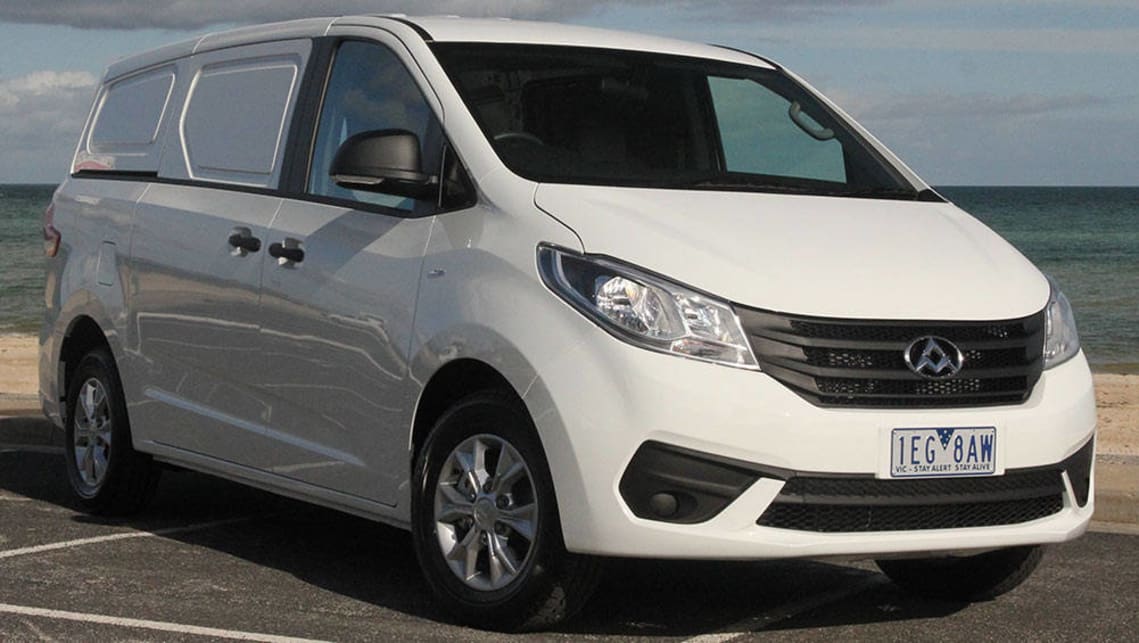
LDV G10 automatic 2015 overview
Chinese brand LDV is challenging established vans with a fresh model at a very low price.
The company introduced the G10 van, a vast improvement over the base and outdated V80 large van that LDV introduced two years ago and is still on sale. What's not clear is that the G10 is safer than the V80 van, which recently received two stars in its ANCAP crash test rating. The G10 is yet to be tested.
The tested car costs $29,990 for the ride (if you have ABN) or $25,990 for the manual, and it's below the $30,990 Hyundai iLoad, the $32,990 petrol Toyota HiAce, and the $37,490 diesel-only Ford Transit XNUMX dollars, none of them. including travel expenses.
LDV hopes that loading its van with standard equipment will help encourage people to try the largely unheard of brand. It comes standard with a turbocharged petrol engine and automatic transmission, along with 16-inch alloy wheels, a rear-view camera and rear parking sensors, cruise control, central locking, a 7-inch touchscreen entertainment screen, power windows, and a Bluetooth telephone. . audio connection.
LDV is reportedly working on a diesel engine, but it's not coming anytime soon.
It's a long list of standard features, but some things are missing from the G10 package. Egregious is the lack of a diesel engine.
Only 10% of Hyundai iLoads are equipped with petrol engines, and Ford doesn't bother to offer a petrol version of its Transit.
LDV is reportedly working on a diesel engine, but it's not coming anytime soon.
Not having a diesel in a cargo van seems like a monumental mistake, but it makes sense given the origins of the G10.
It was originally designed as a seven-seat tractor unit (which is also available in Australia) before being converted to a utility vehicle.
The 2.0-litre turbo, which parent company SAIC says is completely original, puts out a healthy 165kW and 330Nm, and it does power the van at high speeds, although we tested it empty.
It is also relatively refined for a commercial vehicle. Turning the A/C on and off can result in uneven idling, but other than that it's fine.
The LDV uses a Chinese-made ZF six-speed torque converter automatic transmission (such as Falcon and Territory), which is an excellent transmission.
The official fuel consumption is 11.7 l/100 km, which we pretty much matched with the test (would have been more when loaded).
Fuel costs must be considered by potential customers. Competing diesels use less fuel - the official Transit figure is 7.1 l/100 km - but at the same time the price is higher.
The G10 comes with stability control but only has two airbags, unlike the Transit, which has six airbags and a five-star ANCAP safety rating.
No one will know how the G10 works until it fails.
In terms of practical numbers, the only variant of the LDV G10 has 5.2 cubic meters of cargo space, a payload of 1093 kg and a towing force of 1500 kg.
It has six low attachment points, a rubber mat, two sliding doors, and a flip-down rear hatch (barn doors are not an option). A cargo barrier and a Plexiglas shield that fits behind the driver are optional.
In our test, the G10 performed quite well. The steering is pleasant, the brakes (front and rear discs) work well, and the engine power is decent. The quality of some of the interior panels is average, some parts feel a little flimsy, and the rear hatch did come off on impact during the test.
It's a good effort, though an unknown crash safety rating and lack of side or curtain airbags make a recommendation difficult.
The real test will be how the G10 holds up for a few years on the road, but first impressions are that the LDV is picking up steam quickly.
Could the LDV G10 be your next van? Tell us what you think in the comments below.
